For an electric bass player, there are two things that make up over 90 percent of your tone; the bass that you play and the amp that you use to amplify your instrument. You’ve already got your bass, so now you need the right amp to let it truly shine.
You have the option of getting an amp and a separate cabinet, or you could get a bass combo. Bass stacks are usually large in volume and weight, making them more cumbersome to lug around to gigs, and if you just want something to practice on at home they’re definitely not the best solution.
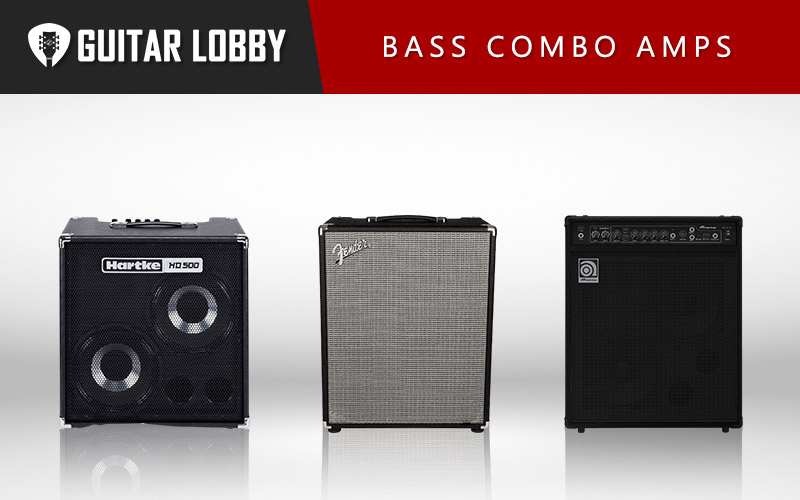
Here’s where the combo could be your best bet. A combo with a decent power output will be your best friend for most gigging situations except, maybe the largest of venues or in outdoor settings, but you can get around this limitation by adding another cabinet to your setup. For band practice and rehearsing at home, there’s really nothing better than a nice quality combo amp.
If you are looking for versatility and portability, then a good bass combo amp is what you should get, and in this article, we’ll be reviewing the best bass combo amps at each price point. If you want to learn more about them before reading reviews, check our combo amp buying guide at the bottom of the page.
| Name of Product | Image of Product | Description | Price Range | Full Review |
|---|---|---|---|---|
| 1. Fender Rumble 500 V3 (Best overall) | 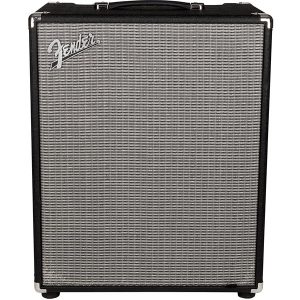 | Type: Solid-state amp Power: 500W | $650 | Read Full Review Below |
| 2. Ampeg BA-210 V2 (Best Under $500) | 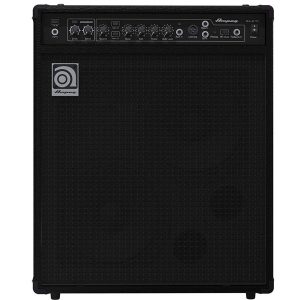 | Type: Solid-state amp Power: 450W RMS | $500 | Read Full Review Below |
| 3. Phil Jones Bass BG-400 Suitcase Compact (Editor's Choice) | 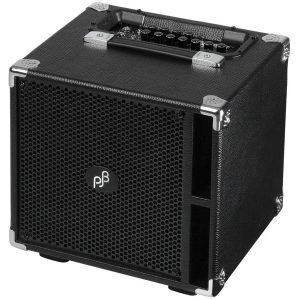 | Type: Solid-state 2 channel amp Power: 300W@8 Ohm, 500W@4Ohm (with external cabinet) | $1200 | Read Full Review Below |
| 4. Markbass Micromark 801 (Best Practice Combo) | 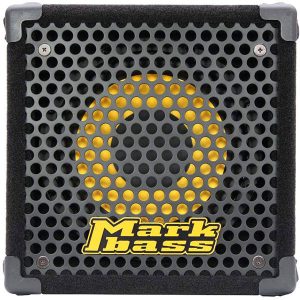 | Type: Solid-state amp Power: 50W@8Ohm, 60W@4Ohm (with external cabinet) | $510 | Read Full Review Below |
| 5. Ibanez Promethean P3110 | 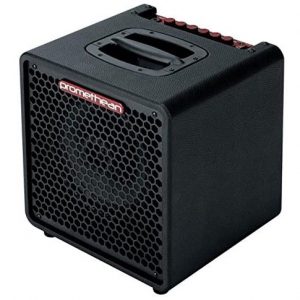 | Type: Solid-state amp Power: 300W | $450 | Read Full Review Below |
| 6. Hartke HD 500 | 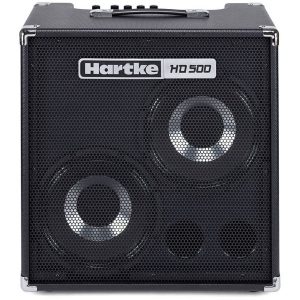 | Type: Solid-state Amp Power: 500W peak, 250W RMS | $600 | Read Full Review Below |
| 7. Peavey MAX300 | 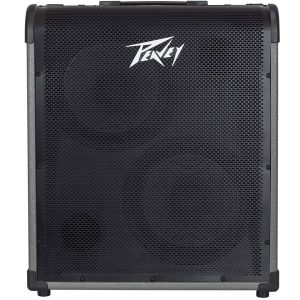 | Type: Solid-state amp Power: 300W | $500 | Read Full Review Below |
| 8. Orange Crush Bass 100 | 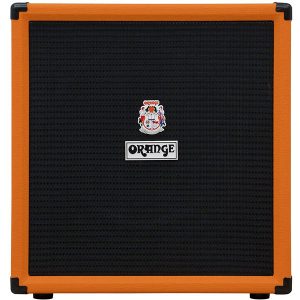 | Type: Solid-state amp Power: 100W | $570 | Read Full Review Below |
| 9. Gallien-Krueger MB210-II | 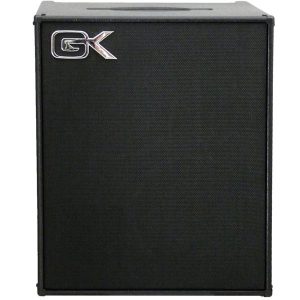 | Type: Solid-state amp Power: 350W@8Ohm, 500W@4Ohm (with external speaker) | $800 | Read Full Review Below |
| 10. VOX Pathfinder 10 Bass Combo | 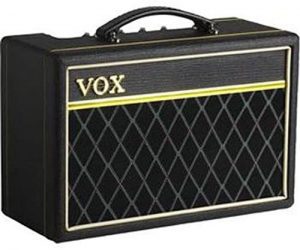 | Type: Solid-state amp Power: 10W | $110 | Read Full Review Below |
| 11. Ashdown Studio 15 | 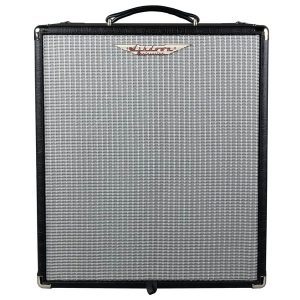 | Type: Solid-state amp Power: 300W | $710 | Read Full Review Below |
| 12. Blackstar Unity 500 | 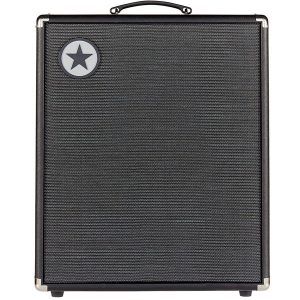 | Type: Solid-state amp Power: 500W | $650 | Read Full Review Below |
Here Are the Best Bass Combo Amps
1. Fender Rumble 500 V3 (Best Overall)
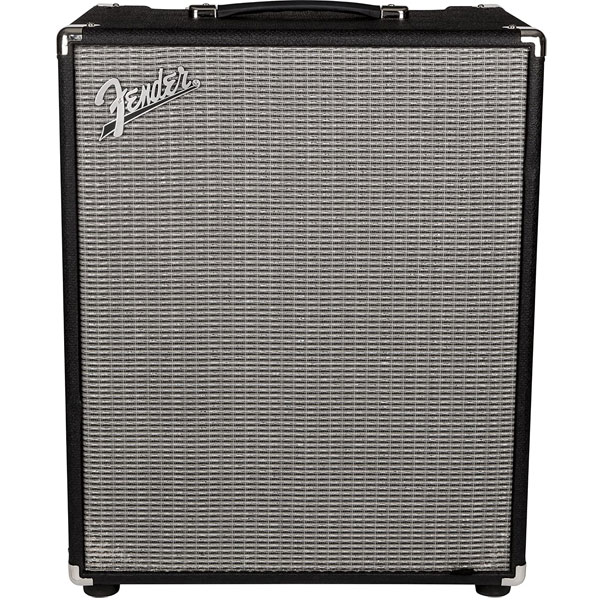
| Estimated Price | $650 |
| Type | Solid-state amp |
| Power | 500W |
| Speaker | 2×10” Eminence speakers |
| I/O | 1x¼” input, 1x⅛” Aux input, 1x¼” Footswitch input, 1x ⅛” headphone output, 1x XLR DI output with ground lift switch, 2x¼” Effects send+return, 1x¼” ext speaker output |
| Weight | 36.5lb (16.5kg) |
My Review: Fender’s Rumble series is probably one of the most successful combo ranges ever created and the Rumble 500 is its top dog. It boasts an amp with 500W of solid-state power driving two 10” Eminence speakers and a high-frequency tweeter. When looking over the control layout you’ll see just how versatile this amp claims to be. There’s a foot-switchable overdrive circuit that lets you dial in anything from a light and creamy overdrive up to a heavily distorted tone. The preamp also features a 4-band EQ with a cut/boost function for Bass, Low Mid, High Mid, and Treble, plus 3 voicing push-buttons: Bright (treble boost), Contour (mid scoop), and Vintage (dynamic compression +low pass filter). The Rumble 500 delivers a very natural sound with a well-defined low-end and a punchy midrange, while the compression tweeter provides a crystal clear high-end. If the Rumble 500 is too big for your needs, check out the rest of Fender’s Rumble series – they’ve got a combo for every occasion.
Key Specs: The Rumble 500 delivers 350W to its two internal 10” Eminence speakers (500W with an external cabinet). It features an overdrive circuit that lets you dial in your desired amount of overdrive while letting you mix it with your clean bass sound. The 4-band EQ is flexible and versatile, with well-chosen frequency ranges.
Target Customer: This is a powerful and flexible bass combo with a reasonable price tag. It does a great job with any style of music, and with an added external cabinet it can serve as your backline for any venue size.
Bottom Line: If you are looking for a powerful bass combo that can be used on stage as well as for band practice, the Rumble 500 is one of the best options out there. I cannot recommend this amp enough.
2. Ampeg BA-210 V2 (Best Under $500)
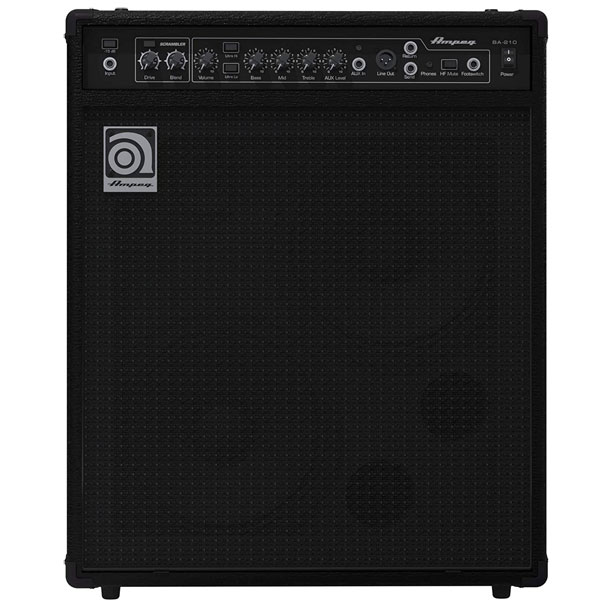
| Estimated Price | $500 |
| Type | Solid-state amp |
| Power | 450W RMS |
| Speaker | 2×10”, 1”x HF Tweeter |
| I/O | 1x¼” input, ¼” + ⅛” aux input, 1x⅛” headphone output, 1x XLR line output, ¼” effects send + return, ¼” footswitch input, ¼” speaker output |
| Weight | 48lb (22kg) |
My Review: Ampeg has recently redesigned their BA (Bassamp) range of bass combos and the BA-210 is the top dog among them. The BA-210 features a 450W solid-state amp, driving two 10” Ampeg designed loudspeakers housed in a reasonably light and easy-to-carry enclosure weighing in at 48lb. The amp features a 3-band shelving EQ with boost and cut function, a master volume control, as well as Ampeg’s Scrambler circuit with its Drive and Blend control knobs. The Scrambler section of the preamp lets you dial in a wide range of overdrive sounds, from subtle, tube-like warmth up to heavily distorted sounds, making the BA a very versatile amp. The classic Ampeg UltraHi (boosts high end) and UltraLo (boosts lows and cuts mids) switches give you even more tonal variety. The Aux input lets you jam to your preferred backing tracks while the headphone output enables silent practicing. You can also engage the Scrambler section by connecting an external footswitch, this gives you access to two distinct sounds with a simple tap. The BA-210 is equipped with a very clean sounding DI and an effects loop. If the 1” high-frequency driver is too modern-sounding for your tastes you can turn it off with the HF mute switch found on the front panel. All-in-all it’s a great-sounding amp with a ton of vintage as well as modern sounds on offer. If the BA-210 is too big for your needs, check out the rest of the BA line, the key difference between them being the speaker size and power rating, the massive Ampeg tone is still there with all of them.
Key Specs: The BA-210 is a solid-state 450W (with external cabinet attached) amp housed in a rugged and well-built enclosure with two 10” Ampeg-designed loudspeakers. The preamp features a 3-band EQ with Bass (+/-14dB@40Hz), Mid (+5/-11dB@500Hz) and Treble (+16/-15dB@4kHz) control. The Scrambler circuit lets you dial in your desired amount of overdrive and blend it with your dry signal. The input has a -15dB switch to accommodate active basses. The BA-210 also has an effects loop, an aux input, headphone output, and the option of adding an external cabinet to your setup. All combos in the BA line feature a slanted back, enabling them to be used as stage monitors, projecting the sound towards you.
Target Customer: The BA-210 is aimed at the gigging bass player who enjoys a little grit in his or her sound. It’s an all-rounder, offering classic Ampeg tube-like warmth as well as more modern Hi-Fi sounds in an easy to carry package. It would be a good fit for any style of music and any level of bass player.
Bottom Line: If you want the sound of a classic Ampeg rig but don’t want to carry one around, take a look at the BA combo line, it won’t disappoint. I would say that this is the best bass combo amp under 500 dollars.
3. Phil Jones Bass BG-400 Suitcase Compact (Editor’s Choice)

| Estimated Price | $1200 |
| Type | Solid-state 2 channel amp |
| Power | 300W@8 Ohm, 500W@4Ohm (with external cabinet) |
| Speaker | 4×5” PJB Piranha Type B |
| I/O | 2x¼” input, 1x⅛” Aux input, 1x⅛” headphone output, 1x XLR DI output with ground lift, 2x¼” FX loop (send+return), 1x¼” tuner output, 1x¼” preamp output, 1x Speakon ¼” external speaker output. |
| Weight | 40lb (18kg) |
My Review: Phil Jones Bass is somewhat of an oddball among bass amp makers. They have made a name for themselves by taking a different path than all the rest. As the mainstream focuses on established loudspeaker diameters (10s, 12s, and 15s), PJB builds lightweight enclosures with multiple 5” or 4” speakers. The BG-400 Suitcase is a 300W, 2-channel solid-state combo with four 5” drivers. It features two identical channels, each with its own ¼” input, Input Level control, and a 3-band active EQ, making it ideal when playing multiple instruments during the same gig. It has a built-in optical limiter with a fixed ratio of 3:1 and a variable threshold set using the Level control.
The ⅛” Aux input also has a Level knob, giving you granular control over the mix of the backing track and bass signal. The PJB is very generous with its routing options, it has an FX loop, a tuner output, and a preamp output (if you want to use an external power amp). Knowing that the BG-400 has 4 small diameter speakers would make you think that its tone is weak and thin, but when you first plug in, you’ll be greeted with a veritable wall of full-range sound. It faithfully reproduces the tone of your bass with a tight low-end, punchy midrange, and crystal clear highs, while the optical compressor does a great job of subtly smoothing out the dynamic peaks in your playing.
Key Specs: The BG-400 Suitcase is a 2 channel solid-state amp with 300W of power driving the four internal 5” drivers. The two channels feature individual input level controls and 3-band EQs. It has a built-in optical compressor with a fixed 3:1 ratio, the threshold is set with the aid of a LED and its threshold level control knob. The combo can output 500W if you add an external 8 Ohm cab, it weighs in at 40lb, and comes with either red or black leatherette covering for the enclosure.
Target Customer: This is a premium bass combo with premium specs, great sounds, and a proportionally high price tag. It is exceptionally well-built, lightweight, and is well suited for extended range basses, as well as double basses due to its wide frequency reproduction range.
Bottom Line: The PJB BG-400 Suitcase is a high-quality bass combo for the demanding bass player, it is feature-packed and sounds fantastic. If you are in the market for the ultimate portable bass combo, this one is certainly among the top contenders.
4. Markbass Micromark 801 (Best Practice Combo)
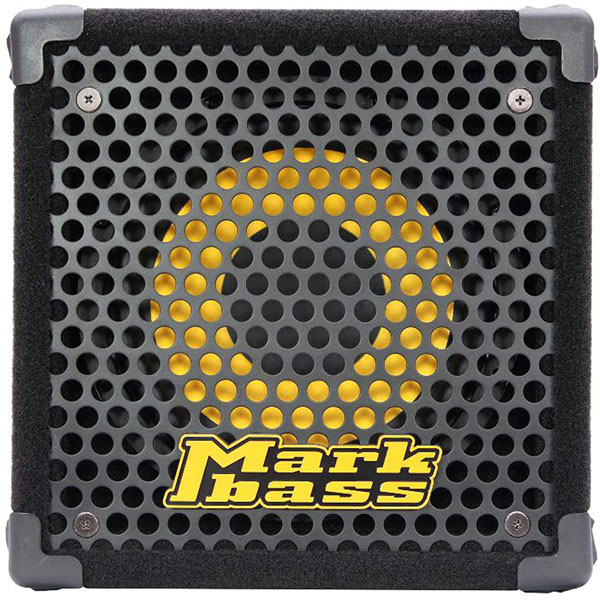
| Estimated Price | $510 |
| Type | Solid-state amp |
| Power | 50W@8Ohm, 60W@4Ohm (with external cabinet) |
| Speaker | 8” custom Markbass speaker |
| I/O | 1x¼” input, 1x⅛” Aux input, 1x⅛” Headphone output, 1x XLR DI output with ground lift, 1x ¼” speaker output |
| Weight | 14.55lb (6.6kg) |
My Review: Markbass are known for making high quality, portable bass amps, and combos that deliver boutique-grade tone. The Micromark 801 is built to the same high standards as all Markbass gear and features a 60W amp with a simplistic control scheme that drives a single 8” speaker. It has only two control knobs: the Level knob sets the overall output volume and the VPF (Variable Preshape Filter) knob, found on most of Markbass’ amps boosts lows and highs while cutting mids as you turn it up, for a mid-scooped bass sound, ideal for rock or slap-bass. When you first plug in your bass, you’ll be amazed how cleanly it reproduces the sound of your instrument, and it even sounds great with double bass and 5- and 6-string basses. As it lacks a standard EQ, most of the tone-shaping will either be handled by the VPF control or by using the active electronics in your bass, but I can say that I’ve never missed the EQ because of how well this little beast sounds. The DI sounds clean and transparent, making it a good home recording tool.
Key Specs: The Micromark 801 is a solid-state 60W bass combo with an 8” driver. It features a simple control layout, with only a Level knob for the output volume and the VPF knob that gives you a mid-scooped sound with enhanced bass and treble, as you turn it clockwise. It has an XLR DI output with ground-lift switch, an Aux input, as well as a headphone output. The ¼” speaker output gives you the option of adding an external speaker, taking advantage of the amps full power rating. It weighs in at only 14.5lb making it very easy to carry around.
Target Customer: The Micromark 801 is a very compact and lightweight combo, well suited for small gigs and for practicing at home. Its rather high price tag might discourage new players, but if you’re willing to invest in a combo for practicing at home, this might be the last one you’ll ever buy.
Bottom Line: This is a little beast of a bass combo. It offers top-notch build and sound quality, in a compact package that weighs just under 15lb. If you are not constrained by a fixed budget and want only what’s best, lake a look at the Micromark 801.
5. Ibanez Promethean P3110
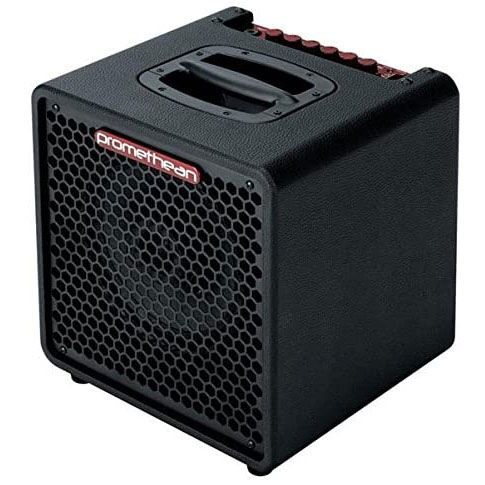
| Estimated Price | $450 |
| Type | Solid-state amp |
| Power | 300W |
| Speaker | 1×10” coaxial speaker with Tweeter |
| I/O | 1x¼” input, 1x⅛” Aux input, ⅛” Headphone output, 1x XLR DI output, ¼” external speaker output |
| Weight | 22.9lb (10.8kg) |
My Review: The Promethean line of bass combos has been around for a few years now, without gaining widespread popularity, but these are very fine amps, without a doubt. They are built to good quality standards with an emphasis on portability. The P3110 outputs 300W of power @4Ohms (with an external cab) and has a 10” speaker with a coaxial dome tweeter to produce a high-quality full-range sound. The amp features a Gain control with a clip LED that lets you set the input of the preamp so that your signal is distortion-free, a Master control knob for the overall output volume, a 3-band EQ with boost/cut function for Low, Mid, and High, plus a Phat control that boosts the lows and highs while cutting the mids for a scooped sound as you turn it clockwise. There is also a built-in peak limiter, activated with the push of a button on the faceplate, that limits your signal when a set threshold is reached, preventing the power amp from clipping. The P3110 also has an ⅛” Aux input, enabling you to play along to your favorite backing tracks, and the ⅛” headphone output lets you practice in silence, bypassing the internal speaker. The XLR DI out has a ground lift switch and a -20dB pad for hotter signals, it sounds transparent, as it should. The sounds coming from this little combo are very clean, and well-balanced with minimal coloring of your fundamental bass tone.
Key Specs: The Promethean is a well-built, lightweight, solid-state, 300W bass combo, with a 10” loudspeaker and a coaxially mounted dome-tweeter that can be switched off if so desired. You get access to the full 300W of power by attaching an external 8 Ohm cabinet. The preamp features a 3-band active EQ and a Phat control that gives you a mid-scooped bass sound with enhanced low and high end. It also has an on-board limiter with a fixed threshold to prevent power amp distortion.
Target Customer: If you are on a budget and need a clean sounding, powerful, and lightweight combo for your gigs or band rehearsals, the P3110 will tick all these boxes for you.
Bottom Line: The P3110 is a little powerhouse designed for full-range clean sounds, that only weighs 23lb. With its capabilities, at this price point, you won’t find anything better.
6. Hartke HD 500
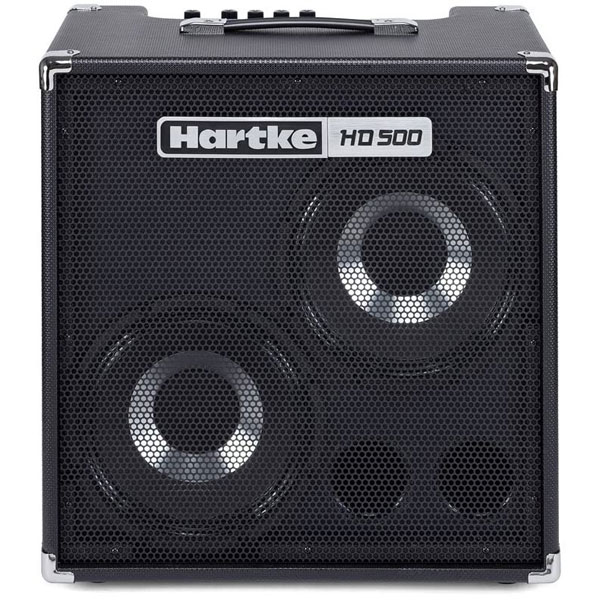
| Estimated Price | $600 |
| Type | Solid-state amp |
| Power | 500W peak, 250W RMS |
| Speaker | 2×10” HyDrive Series |
| I/O | 1x¼” input, 1x⅛” Aux input, 1x XLR DI output, 1x¼” headphone output, 2x¼” FX send+ return |
| Weight | 34.39lb (15.6kg) |
My Review: Hartke’s reputation has soared in recent years, on one hand, due to the quality of gear they produce, and on the other, due to the star endorsers they managed to get on board, Victor Wooten and Jack Bruce, to name just two. The HD 500 is one of their more recent designs, it sports a 500W amp that delivers its class-D power to two of their 10” signature HyDrive speakers. The control layout is very simple and intuitive to use, and it features a master volume, Hartke’s proprietary Shape control (that lets you cut 20dB from the selected frequency), and a 3-band EQ with Bass, Mid, and Treble knobs. The HD500 is an ideal companion for the lovers of slap-bass, the HyDrive aluminum/paper cone speakers offer a perfect mix of high-end attack and low-end growl. The Shape section makes cutting out undesired frequencies a breeze, and the EQ is versatile and clean.
Key Specs: The HD 500 is a well-built 500W bass combo equipped with Hartke’s HyDrive 10” speakers. It features a 3-band EQ with Bass (+/-15dB@70Hz), Mid (+/-15dB@700Hz), and Treble (+/-15dB@5kHz) control knobs. The Shape section is a notch filter letting you cut 20dB from a selected frequency (100Hz-900Hz). It has an XLR DI out, ⅛” aux input, an FX loop, a headphone output, and it weighs in at just under 35lb.
Target Customer: The HD 500 is a great fit for any traveling slap-bass player, it has enough power to get you through medium-sized gigs, and it won’t break your back lugging it around.
Bottom Line: If you’re in the market for a straightforward performer, that’s easy to use, easy to carry, and won’t break the bank, take a look at the Hartke HD500.
7. Peavey MAX300
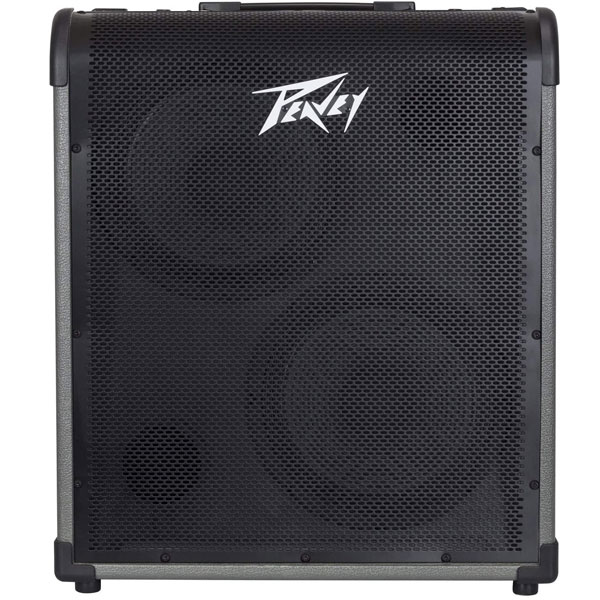
| Estimated Price | $500 |
| Type | Solid-state amp |
| Power | 300W |
| Speaker | 2×10” speakers |
| I/O | 2x¼” inputs passive+active, 1x⅛” Aux input, 1x¼” Footswitch input, 1x⅛” headphone output, 1x XLR DI output, 2x FX loop send+ return, 1x Speakon ¼” Speaker output |
| Weight | 46.4lb (26.3kg) |
My Review: The Peavey MAX300 is the most powerful combo of the MAX series and it comes packed with tone-shaping options and useful features. At the heart of the MAX300 is a 300W solid-state amp, driving two 10” speakers. The amp features a foot-switchable overdrive circuit, a 3-band EQ, a built-in tuner, and four voicing push-buttons: Contour creates a mid-scooped sound, Mid Shift selects the center frequency for the Middle control knob, Bright provides a treble boost and Kosmos-C generates harmonics in the bottom octave, enhancing the lows. The MAX300 produces a tight and full bass tone enhancing the fundamental tone of your instrument. The EQ is well-voiced with 15dB of cut or boost @50Hz and 6kHz for bass and treble, while the mids are shiftable between 250Hz and 600Hz. The overdrive is easy to set up using the Gain and Volume controls, making very good use of the tube-emulation circuitry. It sounds warm and tight without neglecting the tonal character of your bass.
Key Specs: The MAX300 is a 300W solid-state bass combo driving two 10” speakers housed in a solid enclosure. It features an Overdrive circuit, a 3-band shelving EQ, and a built-in tuner. It has two inputs accommodating passive as well as passive instruments, an FX loop, Aux input, Headphone out, XLR DI output, a Footswitch input to engage the overdrive circuit, and an external speaker output.
Target Customer: The MAX300 is a good choice for any rehearsal room, it delivers enough power and punch to cut through the most crowded mix, and its tone-shaping options are numerous. It is reasonably priced for what it offers, but due to its weight, it’s less portable than some other combos out there.
Bottom Line: This is a great bass combo at a reasonable price, it’s not the most portable unit, but it makes up for its lack of portability with great features and killer sounds. Whether you’re looking for the best bass combo amp for small gigs or just something for general use, this is a great choice.
8. Orange Crush Bass 100
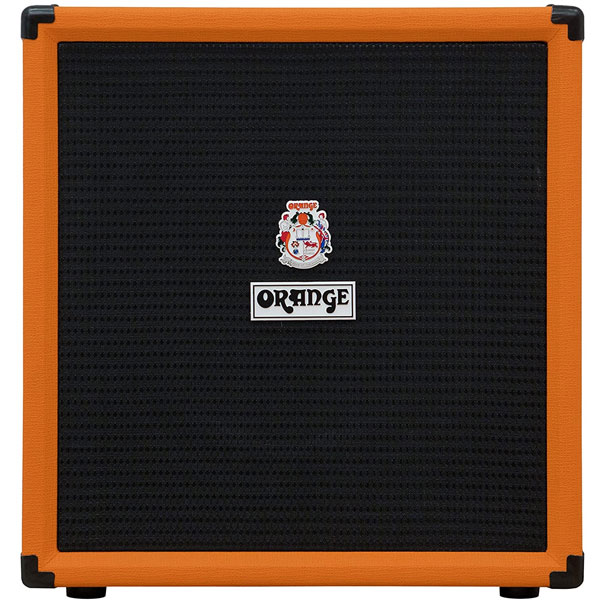
| Estimated Price | $570 |
| Type | Solid-state amp |
| Power | 100W |
| Speaker | 1×15” |
| I/O | 1x¼” input, 1x⅛” Aux Input, 1x¼” headphone output, 1x XLR DI output, 1x¼” Footswitch input, 2x¼” FX loop send+return |
| Weight | 53.46lb (24.3kg) |
My Review: Orange’s Crush Bass 100 combo is a medium-powered, 100W solid-state amp driving a 15” speaker. It has a powerful EQ section and some pro features that make it well suited for use on stage or studio work. The Bass and Middle controls offer +/-15 dB of cut or boost while the Treble knob provides 20dB of cut or boost. The Midrange has a sweepable center frequency from 300Hz to 2.7kHz giving you precise control over a wide range of the frequency spectrum. The Gain control lets you add overdrive sounds to your tone while Blend enables you to mix your clean and distorted signals to your liking. The Crush Bass 100 has a built-in tuner and an XLR DI output, as well as an Aux input and headphone output, giving you the option of using it as a practice amp in your home. For a 100W combo, the Crush Bass 100 is really loud and due to its sweepable midrange, it’s surprisingly versatile. The 15” speaker delivers thick and powerful lows, the midrange is clear and punchy, and the high end is bright and well-defined.
Key Specs: The Crush Bass 100 delivers 100W of solid-state power, driving a heavy-duty 15” speaker in a solid enclosure. It features an active 3-band EQ with sweepable midrange, an overdrive circuit with Gain and Blend controls (foot-switchable), a built-in tuner, an XLR DI output, and an effects loop. It comes either in classic orange or black leatherette covering.
Target Customer: The Crush Bass 100 is a good choice for bass players in search of a versatile combo for small venues and studio work.
Bottom Line: If you are looking for a combo with an emphasis on vintage looks and vintage bass tones, give the Crush Bass 100 a listen, it might surprise you. This is one of the best combo bass amps out there.
9. Gallien-Krueger MB210-II
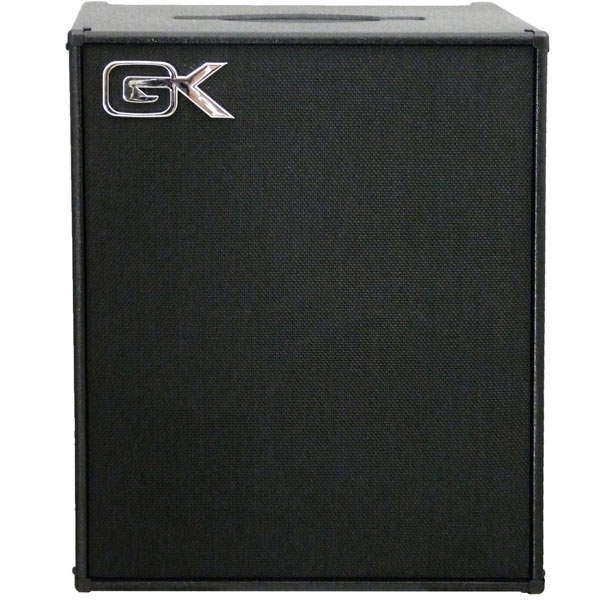
| Estimated Price | $800 |
| Type | Solid-state amp |
| Power | 350W@8Ohm, 500W@4Ohm (with external speaker) |
| Speaker | 2×10” + HF driver |
| I/O | 1x¼” input, 1x⅛” Aux input, 1x ¼” headphone output, 1x XLR DI output, 1x XLR chain out, 1x Speakon/¼” extension cabinet output |
| Weight | 35lbs (15kg) |
My Review: The MB 210 from Gallien-Krueger is a powerful and versatile, high-quality bass combo packed full of useful features. It delivers 350W into its two 10” internal speakers (8Ohm) and 500W with an added external 8Ohm cabinet. The MB210 has an active 4-band EQ with boost/cut function for Bass (+/-10dB@60Hz), Lo-Mid (+6/-10dB@250Hz), Hi-Mid (+6/-1-dB@1kHz), and Treble (+/-14dB@7kHz). The Contour switch gets you a mid-scooped sound with enhanced bass and treble. The Boost control knob adds a post EQ gain stage for extra growl as you turn it clockwise. There’s also a built-in limiter, activated with the push of a button, that smoothes out the peaks in your dynamics. After playing a few notes you realize how clean and clear this combo sounds, the lows are tight and well-defined, the midrange is percussive and strong, while the high-end never sounds harsh or tinny. It’s one of the cleanest combos on the market.
Key Specs: The MB210-II is a 500W solid-state combo with two 10” speakers and a high-frequency horn, built into a very light and portable enclosure. It features a 4-band EQ with cut/boost function, a post-EQ gain stage for extra growl, a built-in limiter, a super-clean XLR DI out with ground lift and pre-post EQ switch, an Aux input, headphone output, and the ability to chain up to 3 Gallien-Krueger MBP powered speakers for a ground-shaking sound.
Target Customer: The MB210-II is a little powerhouse, with very high build-quality and exceptional sounds in an extremely portable package weighing in at only 35lb. It’s not cheap when compared to other combos with a similar power rating, but if you’re serious about your bass tone, you’ll know that quality has its price.
Bottom Line: If you are in the market for a high-quality, lightweight bass combo, and are not constrained by a budget, give the MB210-II a try, you’ll have a hard time passing it up.
10. VOX Pathfinder 10 Bass Combo
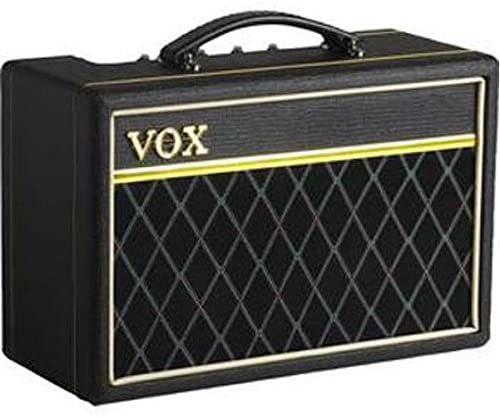
| Estimated Price | $110 |
| Type | Solid-state amp |
| Power | 10W |
| Speaker | 2×5” Vox Bulldog |
| I/O | 1x¼” input, 1x¼” headphone output/line output |
| Weight | 12.32lb (5.6kg) |
My Review: The Vox Pathfinder 10 Bass is a little mini-amp designed for practicing and jamming at lower volumes. It features a 10W solid-state amp, driving two 5” speakers. It has a very simple control layout: Drive lets you add overdrive to your clean signal, the Bright switch gives you a treble boost, the 2-band EQ lets you cut or boost Bass and Treble, and the Volume knob controls your output level. Plugging into the Pathfinder you’ll get a nice and warm sound, but turning up the Gain and Volume knobs will quickly result in rattling and speaker flutter. It sounds best with low Drive settings and the Volume not much past 12 o’clock, but for practicing at home you wouldn’t even need to go that far.
Key Specs: The Pathfinder is a miniature 10W amp with dual 5” Vox Bulldog speakers. It has an overdrive circuit, a Bright switch for an enhanced high-end, a 2-band EQ with Bass and Treble controls, and a master Volume. It has a headphone output for silent practicing and it weighs under 12.5lbs.
Target Customer: This combo is intended as a first practice amp for new bass players, and for what it costs, it does a good job. It’s not a good fit for 5- or 6-string basses, as the speakers can’t touch those low frequencies, but for a 4-string it’s fine.
Bottom Line: If you are looking for a compact bass combo for your home, that looks cool, has decent tones on offer, and doesn’t put a toll on your finances, check out the Pathfinder 10 Bass.
11. Ashdown Studio 15
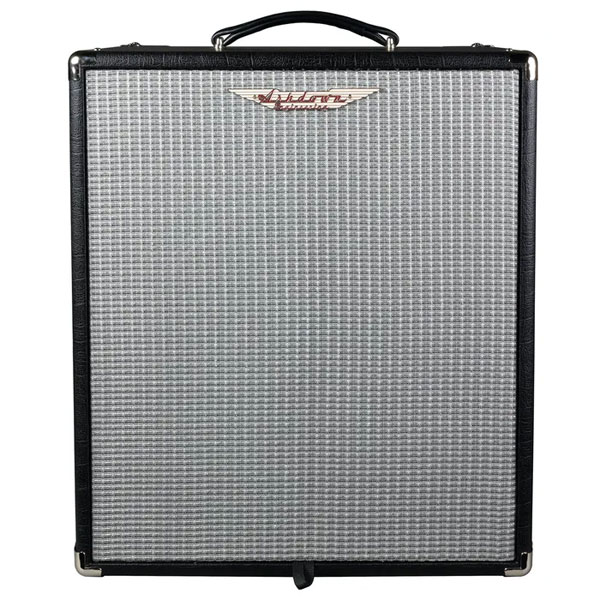
| Estimated Price | $710 |
| Type | Solid-state amp |
| Power | 300W |
| Speaker | 1×15” + HF tweeter |
| I/O | 1x¼” input, 1x¼” line input, 1x XLR DI output, 1x¼” Headphone output, 1x¼” FX loop, 1x¼” footswitch input |
| Weight | 24.6lb (11.2kg) |
My Review: Ashdown’s Studio range of bass combos is only a couple of years old, but they’ve already gathered somewhat of a following among bass players. The Studio 15 is the most powerful in the line-up, with 300W driving a 15” speaker and a high-frequency tweeter. The amp features an overdrive circuit, a 5-band EQ with +/- 15 dB of boost or cut, an FX loop, an XLR DI out, Aux/line input, and a headphone output. The input has a -15dB pad switch to accommodate active instruments.
The shape switch creates a pre EQ mid-scooped sound with enhanced lows and high-end. The Overdrive circuit is controlled with the Drive knob and is also foot-switchable. The Studio 15 has a very nice fundamental tone to it, with a deep and tight low-end, a punchy midrange, and a clear high-end. The 5-band EQ adds a lot of tonal versatility, especially when paired with the Overdrive, letting you dial in anything from a subtle growl, up to full-on distortion. If the Studio 15 is too big or loud for your needs, check out the rest of the Studio range, they’re all great.
Key Specs: The Studio 15 is a solid-state 300W bass combo with a 15” speaker and a high-frequency tweeter (which can be turned off with a switch on the backplate). It features a 5-band EQ with +/-15of cut or boost, a foot-switchable overdrive circuit, an FX loop, and an XLR DI output. The line input lets you play along to your choice of backing track, while the headphone output enables silent practicing.
Target Customer: The Studio 15 is a well-built bass combo, and it’s extremely lightweight, making it easy to carry to gigs. The sound quality is very good, and the price tag is reasonable when compared to its competition. It’s a good choice for any level of bass guitar player.
Bottom Line: If you are looking for a lightweight bass combo with powerful sound and a lot of versatility, take a look at the Studio 15 from Ashdown.
12. Blackstar Unity 500
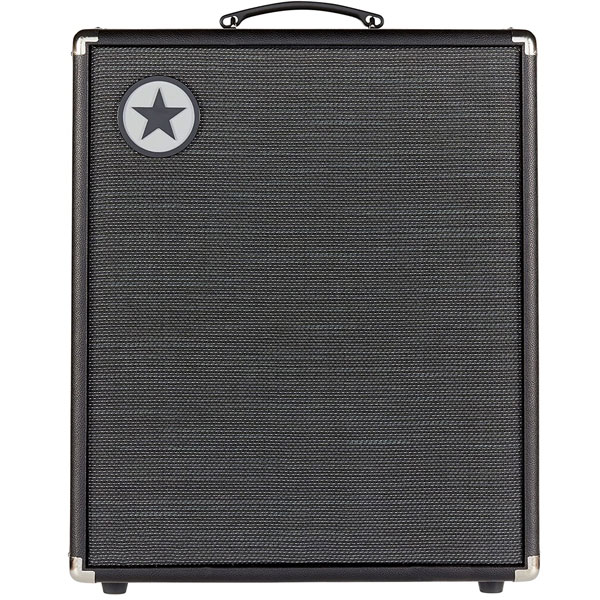
| Estimated Price | $650 |
| Type | Solid-state amp |
| Power | 500W |
| Speaker | 2×10” Eminence Opus |
| I/O | 1x¼” input, 1x⅛” Line/mp3 input, 1x¼” headphone output, 1x XLR DI output, 2x¼” effects loop, USB mini B, XLR cabinet link output |
| Weight | 48.5lb/22kg |
My Review: The Unity 500 pairs a 500W solid-state amp with two 10” Eminence Opus drivers in a reasonably light but solid enclosure. The Unity 500 is probably the most feature-packed combo on this list. Under the Gain knob, you’ll find a 3-way selector switch (marked Classic, Modern, Flat), it lets you select one of three different voicings for the preamp as well as the EQ behavior. The Drive knob determines the amount of distortion you want to add to your clean signal. The type of distortion is selected with another 3-way switch, you can choose between overdrive, distortion, and fuzz. The 3-band EQ has a sweepable midrange; the frequency ranges, as well as the amount of boost or cut, differ according to the selected preamp voicing.
The Response selector determines how the power stage reacts to your dynamics: Linear, emulating a 6L6 or 6550 tube power amp. Under the Response selector, there’s another 3-way switch letting you choose an effect that you want to add to your tone (Off, Chorus, Octave), the effect levels are set on the rear panel using trim pots. The Unity 500 also has a built-in, one-knob compressor, which you can turn on or off. Considering how many tweaking options you have, the Unity 500 is surprisingly easy to set up. Its fundamental tone provides large amounts of low-end, sparkling high-end, but is slightly lacking in the midrange (easily corrected with the semi-parametric Mid controls). The three preamp voicings paired with the response selector’s three settings offer a huge range of tonal versatility. By adding the drive effects plus chorus and the octave into the mix you really get near-limitless possibilities.
Key Specs: The Unity 500 boasts a 500W amp driving a pair of 10” Eminence speakers. It features a preamp with 3 selectable voicings, 3 distortion effects ( overdrive, distortion, fuzz), a 3-band EQ with sweepable midrange, 3 power stage response profiles, 2 effects (chorus and octave), a one-knob compressor, an XLR DI output, a USB port for easy recording into your choice of DAW, an effects loop, and the ability to connect an external powered cabinet.
Target Customer: The Unity 500 is a feature-packed bass combo with great versatility and tones on offer. Its complexity could deter newcomers, but for the tweakers out there it will be a godsend. It’s a great little combo well suited for any music genre, but its functionality shines with rock music.
Bottom Line: If you want big sound from a small package, and don’t shy away from reading the manual, the Unity 500 is definitely worth a good look.
Choosing the Right Combo Bass Amp (Buying Guide)
This section is for those of you who want to learn more about combo amps before reading reviews on them.
What is a Bass Combo Amp and What Should You Expect From One?
A “combo” is an amplifier that is incorporated into the speaker cabinet, this eliminates the need of buying a separate amp and speaker and hooking them up together.
A bass combo differs from a guitar combo in the same way a guitar stack differs from a bass stack: because of the lower frequencies of the bass guitar speakers are usually larger than with a guitar rig, and larger speakers need to move larger volumes of air so you also need more power (watts) from your amp.
A bass combo will be explicitly designed for the bass guitar. It generally consists of a preamp, a tone shaping stage with an EQ section, a power amplifier, and a cabinet featuring one or more speakers.
How Will You Use Your Bass Combo?
The easiest way to pick the combo that’s right for you is by knowing what your needs and wants are.
If you want a combo for practicing at home, then something small and compact will be the ideal choice. Power-wise, 50W and a 5”-10” speaker is more than enough to get the job done, verging on overkill. A headphone output and an auxiliary input are great options to have, letting you practice in silence to your choice of backing tracks.
If you are looking to get a combo as your main gigging companion, the requirements also change a bit. Now you are more concerned with build-quality, durability, portability, features, power, and headroom. Depending on your preferred style of music, a combo with a power rating of 150W-300W and a couple of 10” inch speakers should serve you just fine.
What to Look for in a Bass Combo?
As with all gear, the build-quality, and the quality of the components is quite important to the longevity of your combo, especially if you’re constantly on gigs, where it gets banged up during transport. The size and weight of the combo don’t always speak for its quality, but in most cases, they’re a good indicator. A good bass sound needs a solid enclosure to properly reproduce the low frequencies of the bass guitar, but a “solid” enclosure will add weight to the setup. Manufacturers are always looking to reduce the mass of the combo by using new materials and technologies without compromising the sound quality. As a gigging musician, you will carry around your combo a lot, so make sure its carrying handles are comfortable for you to deal with.
Amplifiers Explained
The heart of your combo and the source of your bass tone is the amp. It is comprised of three sections: the preamp, the EQ (which is still part of the preamp), and the power amplifier.
The preamp is a piece of electronic equipment used to increase the volume of your instrument’s signal. The straight signal from your bass is weak and prone to generate high noise levels if amplified directly, so a preamp will convert your weak signal to a higher voltage one with a higher noise tolerance before sending it to a power amplifier and lastly, to the speaker. Simply put it makes your signal louder, preparing it for amplification. Without it, your signal would be noisy or distorted. Besides boosting your signal to prepare it for amplification, it also lets you shape the bass tone to a certain degree.
The preamps that you’ll encounter in bass combos come in two varieties: Tube preamps and Solid-state preamps.
Tube preamps use vacuum tubes to prepare your bass signal for amplification. They are not considered “transparent” as they color your bass tone, which is what you may like, or want. They add warmth to your sound and usually let you get some nice overdriven sounds when turning the input gain stage to its higher settings.
Solid-state preamps usually make use of transistors to increase your signal’s strength and voltage. They offer a much more transparent sound than a tube preamp would, and in theory, they won’t add warmth or color to your fundamental tone. After the preamp boosts your signal, you’re ready for some tone-shaping using the EQ.
The EQ section of an amplifier will be the main tone-shaping tool at your disposal. EQs come in 4 varieties: Shelving, Graphic, Parametric, and Semi-parametric.
The Shelving EQ This is the most basic and inexpensive type of EQ, it can be found on most amplifiers out there. It usually lets you control the Bass, Mid, and Treble (3-band EQ), by boosting or cutting that specific frequency range. Sometimes the single Mid frequency control is split into Low Mids and High Mids (4-band EQ), especially useful as the mids are the most important frequency range for the bass guitar. Their central frequencies and bandwidth are fixed. This type of EQ is a simple and straightforward way to control the basic equalization parameters. Because of the shelving EQ’s simplicity and ease of use, you’ll find it on most bass amps that you’ll encounter.
The Graphic EQ is not widely spread among bass amps, but there are a few that have this kind of equalization tool. It features a bank of slider controls to cut or boost fixed frequency bands. Most graphic equalizers divide the sound between 6 and 31 bands of frequency, with the sliders controlling the volume of individual bands. Each band is marked in Hz with the frequency it controls. Graphic EQs are very easy to use as the shape of the slider curve usually adheres to the shape of the audio curve of the signal – if you want a “mid-scooped” bass sound, you’ll dial in a roughly U shaped curve on the EQ’s sliders, hence the “graphic” in its name.
The Parametric EQ is the most precise type of equalizer available, letting you control all of the parameters of your equalizer. While parametric EQs usually feature fewer frequency bands than a graphic EQ, the former offers a lot more control. It usually allows you to set the center frequency, as well as gain, and bandwidth or Q. The downside of the parametric EQ is that you need to spend more time with it to understand what everything does and to dial in the sound you want, but it is the most versatile of all the EQ types. It is often found on studio equipment, and more rarely on a bass amp where you want quick and easy ways to shape your tone.
The Semi-parametric EQ is very similar to a parametric EQ, but with one or more features missing. Typically, it allows you to set the frequency you want to equalize and the gain (the amount of cut or boost you want to apply to that frequency). Bandwidth or Q controls are fixed in a semi-parametric EQ. This type of EQ is a good tradeoff between versatility and ease of use and is found more often on bass amps in recent years, which is a very welcome trend in the industry.
The preamp section sometimes features useful tone-shaping switches or buttons like “Bright”, “Shape or Scoop” or “DeepBass” etc… Whatever the manufacturer calls them, they allow you to get a basic bass sound with the push of a button: Bright – would boost your high-frequency range for a brighter sound, Shape/Scoop – would boost or cut mid frequencies, DeepBass – would boost the low end. After engaging one of these preset sounds you can then fine-tune your tone with the use of the EQ.
The Poweramp takes your EQed signal from the preamp section and adds power to it (measured in Watts). This powered signal is then used to drive your speakers. Poweramps come in two varieties: Tube and Solid-state.
Tube power-amps use vacuum tubes to increase the amplitude (power) of your signal. They are almost always found either in a full tube amplifier, where both the preamp and power-amp make use of vacuum tubes like in vintage or high-end amps or as separate tube power-amp units. For the most part, power-amps in combos will feature solid-state inner workings, reducing power consumption and weight while being less prone to failure because of improper handling.
How Much Power Do You Need?
The amount of power you need from your amp depends on your specific application.
If you want a practice amp for your home, 50W should be enough although slightly on the high side (my practice amp for the past decade was and still is a 20W solid-state bass combo, and it is fine for my specific needs).
If you want an amp for your band rehearsal, there’s a general rule of thumb that states a bass player should have double the amp-power of his guitar player or players. Meaning that if your guitarist plays through a 100W amp, the bass player should have 200W at his or her disposal (two 100W guitars should have 400W of bass power on hand). Of course, this is just meant as a nudge in the right direction, in practice, these figures make more sense when applied to rock music than jazz, but even with quieter music genres, having a powerful amp means that you have a lot of headroom, and you can always turn down your volume to fit in nicely into the mix.
Speakers
The speakers transform the electrical signal that the amp converted, shaped, and powered into the sound that you ultimately hear. In essence, they function by the same principle by which the pickups in your bass convert the string vibrations into an electrical signal, but in reverse; they convert an electrical signal into the physical motion of the speaker cone, this motion will displace the air in front of the cone with a frequency corresponding to the electrical signal, creating sound waves. As the volume of air that needs moving is larger with low frequencies than it is with higher ones, bass speakers need more power to properly reproduce them and usually require larger cone-sizes.
One of the major drawbacks for bass speakers is that until a few years ago they were very heavy due to the large magnet sizes required by ferrite magnets. Newer speaker designs feature neodymium magnets with dramatically reduced mass when compared to traditional speaker designs. Though purists claim that the old-school ferrite magnets have superior sound qualities, I have never been able to distinguish a “neo”-type magnet from a ferrite magnet by sound alone. And for a bass combo, that you’re going to lug around, the reduced weight will be a welcome improvement. The bottom line: Get a “neo” magnet when weight is an issue.
What Size of Loudspeaker Should You Get? And How Many?
This is one of the more heavily debated subjects among bass players, as it is more up to personal preference. The staples of bass players for the last couple of decades have been the 10” and the 15” speaker. A traditional bass stack usually consists of 4X10” speakers aided by a 15” woofer for really low frequencies.
The 10” loudspeaker has been a very good all-round choice for bass, being able to reproduce reasonably low frequencies, while retaining the fast attack and snappiness of your midrange.
15” speakers give you well-defined lows, but they are generally slower to respond when playing fast licks. This doesn’t mean they lack attack, just that it has a different character. A 15” speaker is often aided by a horn or tweeter to make up for the lacking highs. As an example of the contrary, bass legend Jeff Berlin plays a 300W, 15” bass combo from MarkBass with no tweeter, and I’ve never found his tone lacking in attack, punch, or high-end.
12” loudspeakers sit somewhere in between 10s and 15s, they go lower in frequency than 10s and are faster than 15s.
In the under 10” range you’re usually looking at “practice amp” territory with 5” and 8” speakers, but there are exceptions, like amp and cabinet maker Phil Jones, whose high powered amps are usually paired with small diameter loudspeakers (but a lot of them) in most cases with stunning results.
The bottom line: there are no rules anymore regarding speaker size and number, just friendly suggestions. Big loudspeakers can sound thinner and weaker than a cabinet with many small-diameter speakers.
Most of the combos you’ll encounter will let you expand your setup by adding an extra cabinet, this gives you access to even more power from the amp, and you can tailor the sound to your liking according to the specifics of the cabinet as mentioned above (15s are slower but go lower, 10s are faster and more midrangey, 12s are somewhere in between).
Features
Some bass combos come equipped with useful features that will make your life much easier and sometimes spare you from buying or carrying around a bunch of effects.
One of the most helpful features you’ll find on a bass combo is a balanced XLR DI out.
DI or Direct Injection, was often found on some of the pricier amps in the past, but it’s now included with most bass combos, maybe excepting those intended for at-home use. A DI takes an unbalanced, high impedance signal from your instrument and turns it into a balanced, low impedance signal. This means that you can send the signal directly into a recording console or into a P.A. and it prevents degradation when running the signal through long cables. It just gives you a lot more options when playing live or when recording in the studio.
Built-in effects are very nice to have if you want to keep down the weight of your gear. Some manufacturers include basic compressors with their combos but others like TC Electronic give you the option of having an entire pedal-board worth of effects, which you can switch out using a simple app.

My name is Chris and I’ve had a passion for music and guitars for as long as I can remember. I started this website with some of my friends who are musicians, music teachers, gear heads, and music enthusiasts so we could provide high-quality guitar and music-related content.
I’ve been playing guitar since I was 13 years old and am an avid collector. Amps, pedals, guitars, bass, drums, microphones, studio, and recording gear, I love it all.
I was born and raised in Western Pennsylvania. My background is in Electrical Engineering, earning a Bachelor’s degree from Youngstown State University. With my engineering experience, I’ve developed as a designer of guitar amplifiers and effects. A true passion of mine, I’ve designed, built, and repaired a wide range of guitar amps and electronics. Here at the Guitar Lobby, our aim is to share our passion for Music and gear with the rest of the music community.
